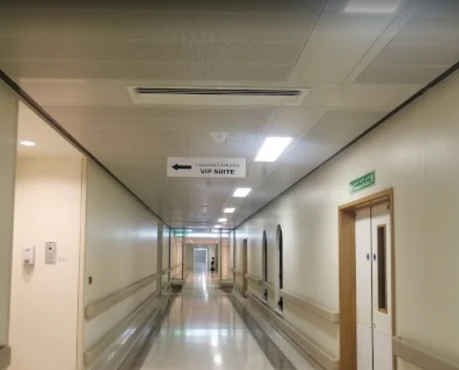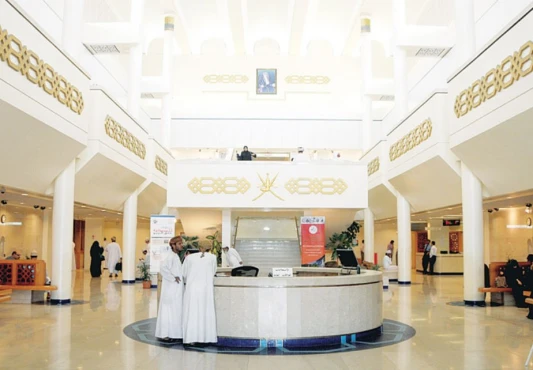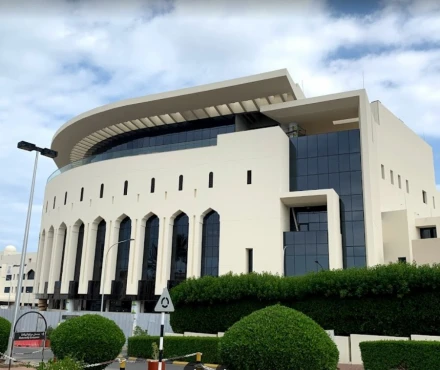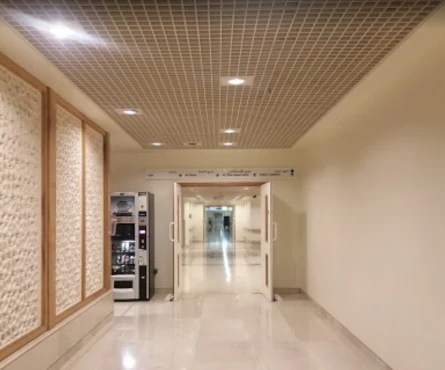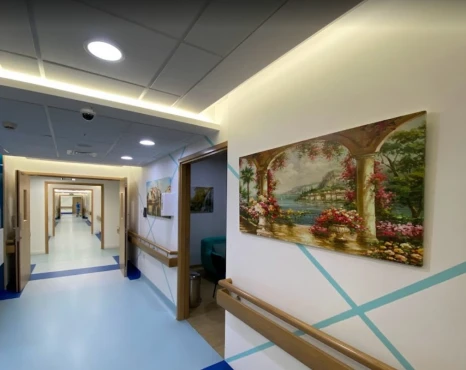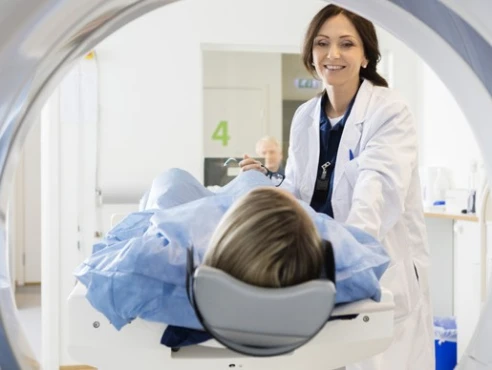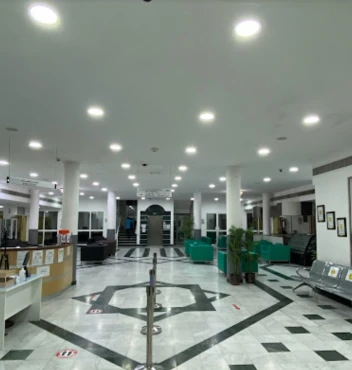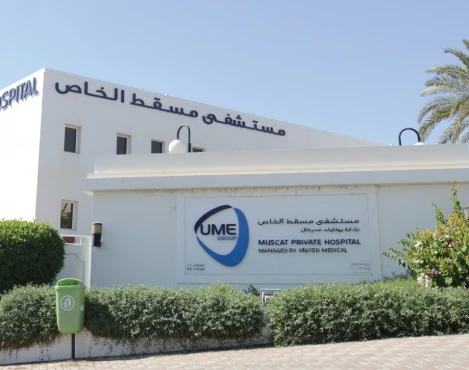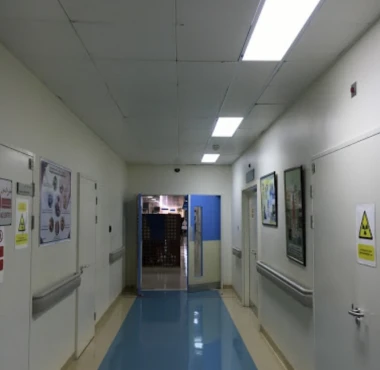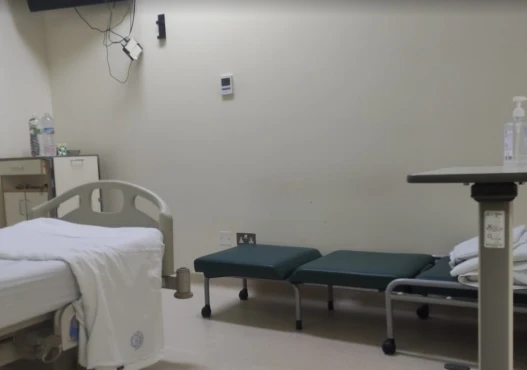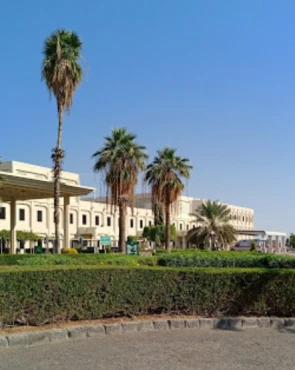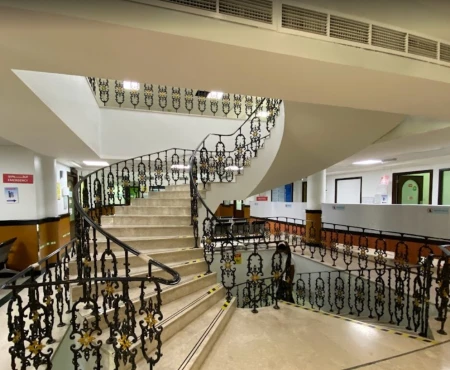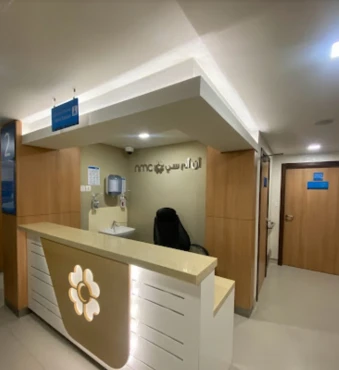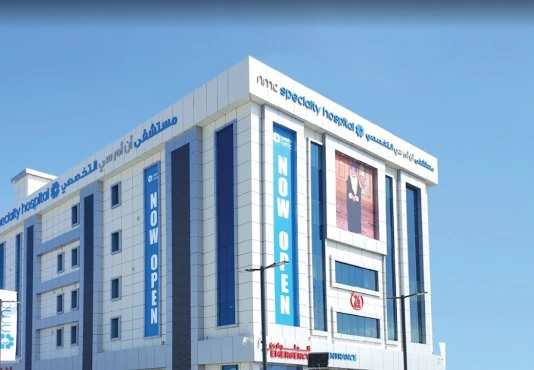Coronary artery bypass graft (CABG) in 2 Cardiac surgery clinics in Muscat
2 clinics specializing in Cardiac surgery providing
Coronary artery bypass graft (CABG)
CABG is a surgical procedure that involves grafting a healthy blood vessel from another part of the body to bypass a blocked or narrowed coronary artery, improving blood flow and reducing symptoms of angina.
Read more...
procedure in Muscat.
Sorted by:
Relevance
Rating
Cost of procedures
Relevance
Prices for selected procedures, total:
≈ $12,167
Prices for popular procedures:
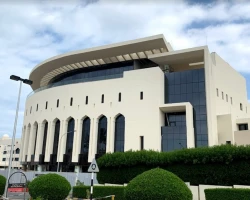
Muscat, Oman
Specializations: Cardiac surgery, Vascular surgery, Thoracic surgery, Neurosurgery, Orthopedic surgery, Oncology
Languages: English
Since the opening of the hospital and health services in this majestic edifice, it has been steadily moving towards development and prosperity and keeping pace
read more
Prices for selected procedures, total:
≈ $12,167
Prices for popular procedures:
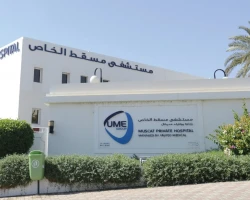
Muscat, Oman
Specializations: Cardiac surgery, Vascular surgery, Thoracic surgery, Neurosurgery, Spine surgery, Orthopedic surgery, Oncology
Languages: Arabic, English, French, Hindi, Italian, Urdu
Located in the heart of Muscat and scenic area of Bausher, Muscat Private Hospital (MPH) is Oman’s first premier private medical facility offering state-of-the-art luxury
read more
3 nearby similar clinics in Oman
Perhaps you should consider 3 more clinics we have found nearby basing on your Location, Procedure filters applied.
Prices for selected procedures, total:
≈ $12,167
Prices for popular procedures:
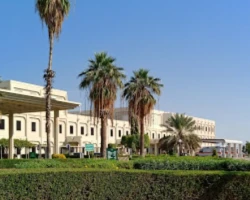
Seeb, Oman
Specializations: Cardiac surgery, Vascular surgery, Thoracic surgery, Neurosurgery, Orthopedic surgery, Oncology
Languages: English
Sultan Qaboos University Hospital, Muscat Sultanate of Oman was established in 1990 to provide medical care in a patient friendly atmosphere and in a spirit
read more
Prices for popular procedures:

Muscat, Oman
Specializations: Cardiac surgery, Vascular surgery, Thoracic surgery, Neurosurgery, Spine surgery, Orthopedic surgery, Oncology
Badr Al Samaa Group of Hospitals & Medical Centres made its humble beginning as Polyclinic in 2002 and gradually became the largest private healthcare group
read more
Prices for popular procedures:
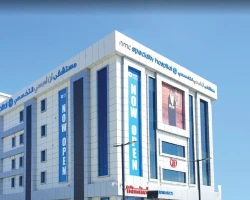
Muscat, Oman
Specializations: Cardiac surgery, Vascular surgery, Thoracic surgery, Neurosurgery, Spine surgery, Orthopedic surgery, Oncology
Languages: Arabic, English, German, Hindi, Kannada, Urdu
For 43 years, NMC Healthcare has earned the reputation of being a world-class medical institution synonymous with genuine care and commitment. NMC Healthcare is proud
read more
Procedure price distribution in Muscat
Coronary artery bypass graft (CABG):
$12.2 K
This price found in Oman, Muscat
$12.2 K
This price found in Oman, Muscat
Minimum Average Maximum
Procedure prices in popular countries:
Coronary artery bypass graft (CABG):
China
$7.7 K - 7.7 K
in
4 clinics
Israel
$14.9 K - 42.6 K
in
13 clinics
Turkey
$15.5 K - 15.5 K
in
26 clinics
Germany
$48.3 K - 48.3 K
in
26 clinics
United States
$137.8 K - 296.0 K
in
15 clinics
Countries with the highest number of clinics offering the procedures treatment:
Coronary artery bypass graft (CABG):
worldwide
551 clinics
Brazil
37 clinics
India
37 clinics
Germany
26 clinics
Turkey
26 clinics
Colombia
24 clinics
Clinics grouping by rating
Clinic with the highest rating of 4.3 — The Royal Hospital, Oman in Muscat, Oman, clinic with the most reviews number of 512 — Muscat Private Hospital in Muscat, Oman.
With rating from 3.0 to 3.9 — 1 clinic.
With rating 4.0 and over — 1 clinic .
